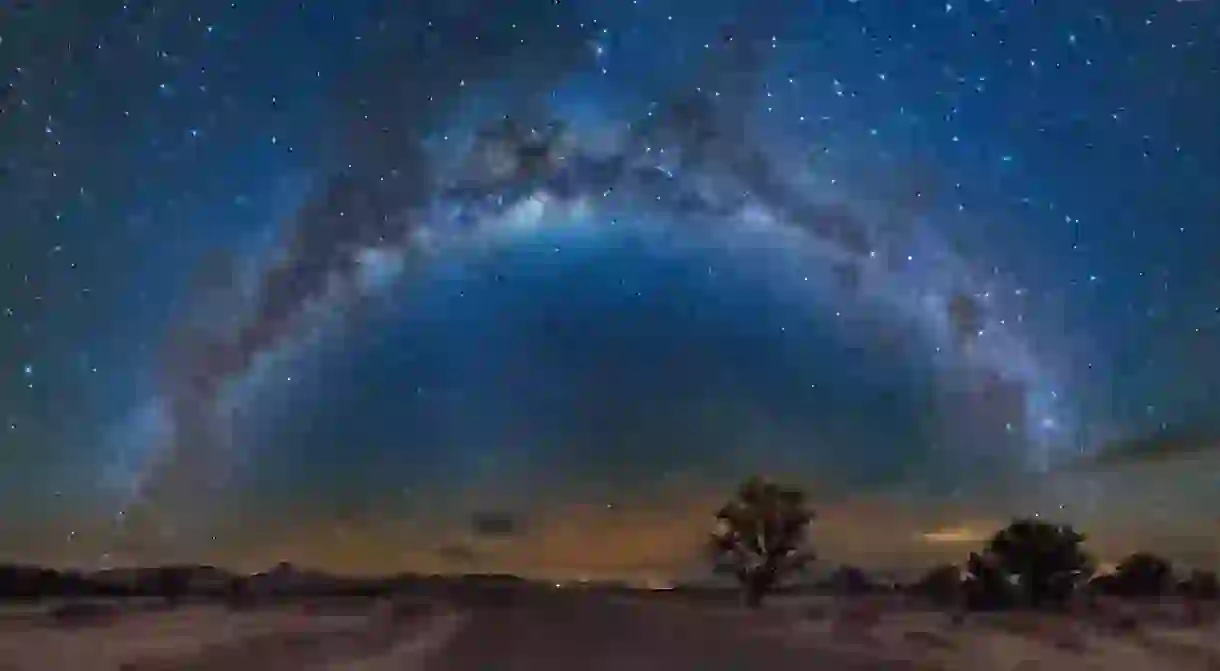The Best Places in the World to Stargaze

For many, the night sky is merely a blanket of purple darkness pulled across the sun. But in more remote parts of the world with less light pollution, you can gaze deep into space – a perspective-shifting experience that’s as profound as it is pretty. Prepare to be starstruck at these dark sky destinations across the planet.
Canary Islands, Spain
Natural Feature

Adrift off the northwestern coast of Africa, surrounded by the open Atlantic Ocean, the Canary Islands are a stargazer’s paradise. Not only are they free from light pollution, but their geographical position, right in the path of trade winds, means clouds rarely ever form over the islands, offering an unblemished view of the Milky Way as well as 83 of the 88 constellations. The island of La Palma is nicknamed Star Island for the clarity of its skies, which are additionally protected by Sky Law from the distracting lights of air traffic.
Nova Scotia, Canada
Natural Feature

On the east coast of Canada, the island province of Nova Scotia is one of the best places to stargaze in North America. Its Acadian Skies and Mi’kmaq Lands area, in the southwest of the region, is one of just a handful of places globally to have been designated as a Starlight Reserve and Destination by the Starlight Foundation. Looking up through the canopy of pine and cedar and seeing the sky sprayed in celestial glitter is an unforgettable experience.
Atacama Desert, Chile
Natural Feature

Karoo National Park, South Africa
Park, Natural Feature

South Africa has some of the starriest skies anywhere on the planet. The South African Astronomical Observatory houses the largest single optic telescope in the Southern Hemisphere, but you don’t need 20 million pounds worth of kit to get a decent view of the constellations here. Just head around four and a half hours northeast of Cape Town to Karoo National Park, where consistently clear skies and non-existent light pollution make the stars appear like a sea of LEDs.
Mount Cook, New Zealand
Natural Feature

The South Island of New Zealand, a largely unpopulated region of mountain ranges, lakes and glacial fjords, is one of the world’s best dark sky locations. In particular, the Aoraki Mackenzie International Dark Sky Reserve is the largest of its kind in the Southern Hemisphere, and one of only eight in the world. Visit the park’s Mount John Observatory for out-of-this-world views of the Milky Way, the Magellanic Clouds and the Southern Cross constellation, only visible from this part of the world.
Hawaii, USA
Natural Feature

The Hawaiian islands, scattered across an otherwise barren expanse of the Pacific Ocean, are a dream for dark sky enthusiasts. Even on its most populated island, Oahu, there are excellent stargazing spots, such as Kaena Point State Park. To fully appreciate just how blingy the skies of Hawaii are, you’ll want to go stargazing on either Maui or the Big Island, which have far less light pollution. For the best views from the latter, take the two-hour drive up to Mauna Kea peak, where you’ll feel you’re within touching distance of the brightest stars.
Utah, USA
Natural Feature

If you thought there couldn’t be world-class stargazing on the USA mainland, you’ve clearly not been stargazing in Utah. This desert state is both remote and dry enough to be considered one of the best places globally for budding astronomers to get their eye in. With five massive national parks spread out across the middle and lower half of the state, you’re spoilt for spots to set up your telescope – but we’d suggest Canyonlands National Park as a starting point, for being both the largest and the most remote.
Höfn, Iceland
Natural Feature

Not only are skies full of stars on the menu in Iceland, but there’s a good chance – if you come in the winter months – you’ll catch a glimpse of the Northern Lights, too. Beyond the bright lights of Reykjavik, the coastline and interior of Iceland are dotted with little towns and villages – like Höfn – that are too small to cause any real light pollution. However, with its inclement location in the North Sea, it’s the rolling clouds that are more of a hindrance to sparkling skies. When you get a glimpse, however, they’re breathtakingly beautiful.
This is a rewrite of an article originally by Zoe McIntyre.













